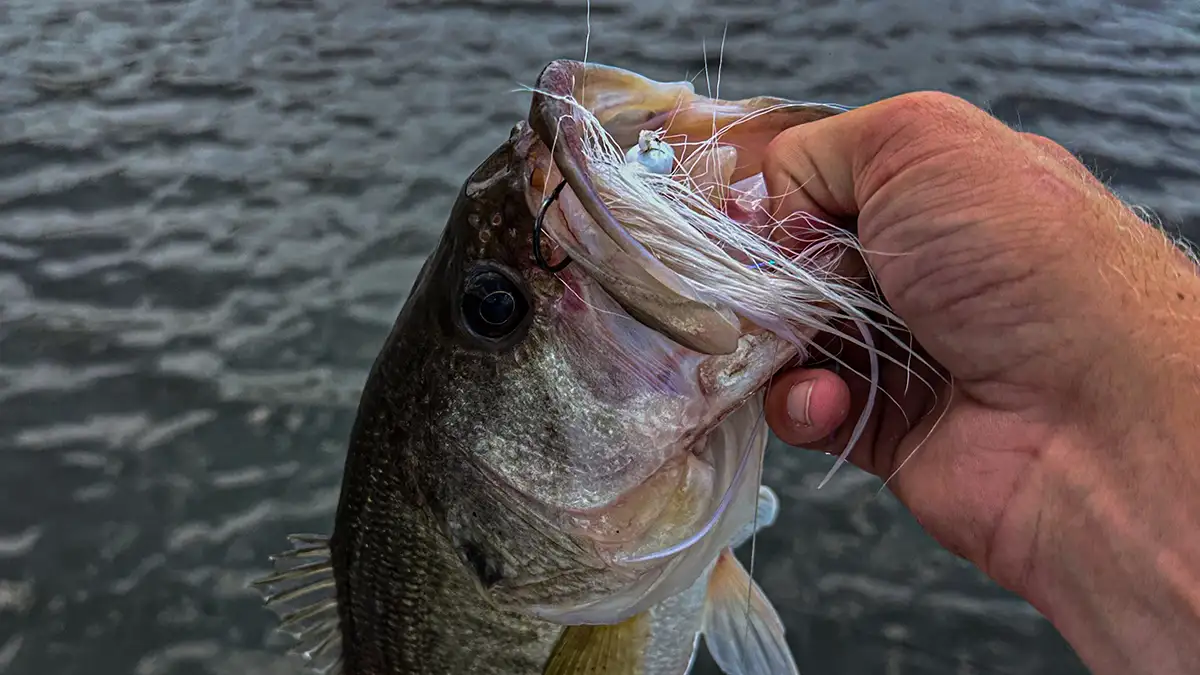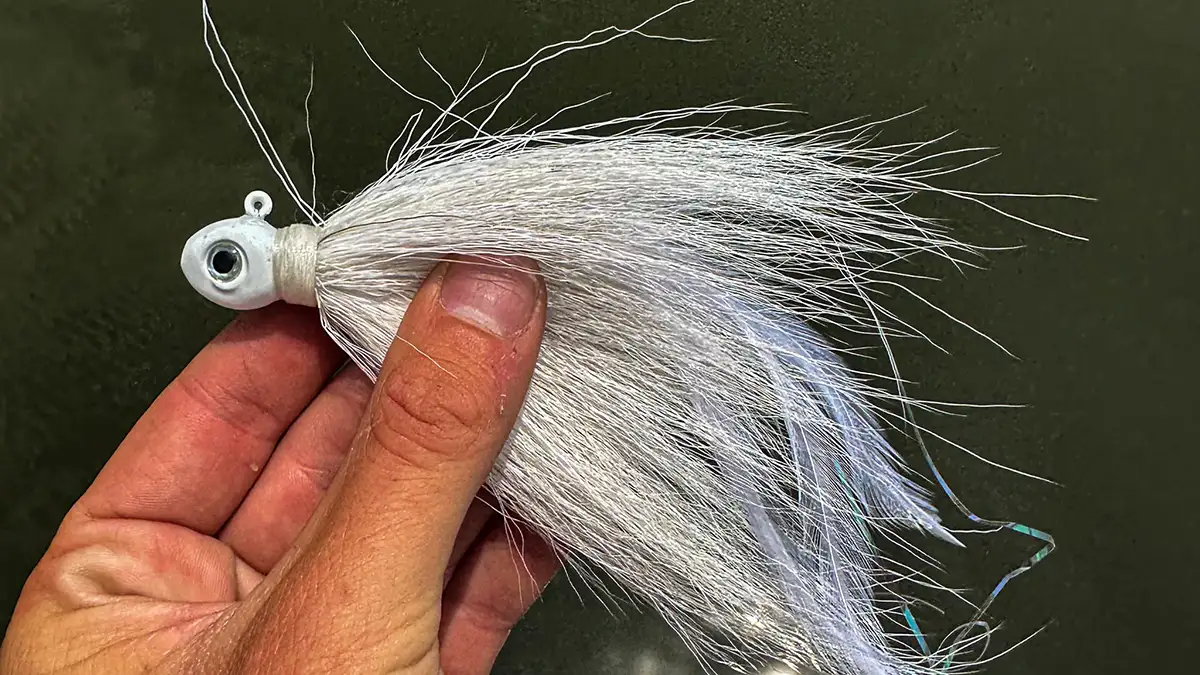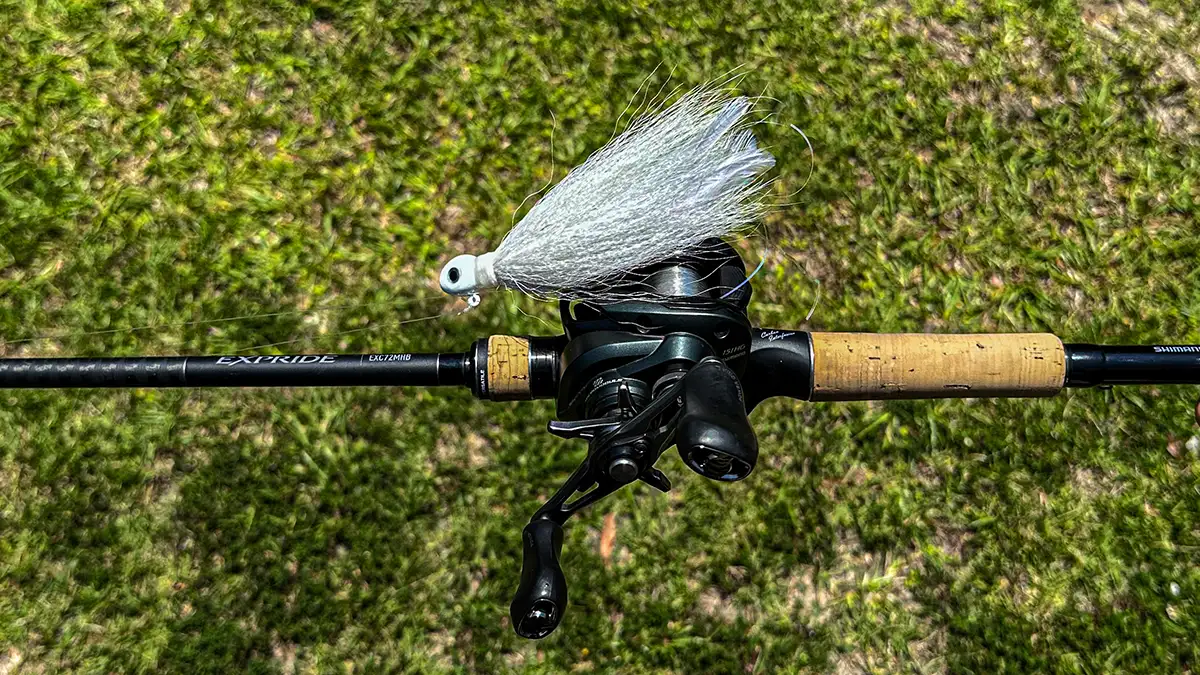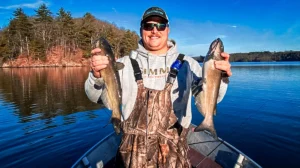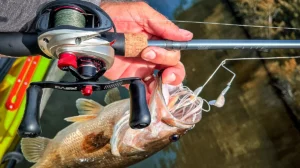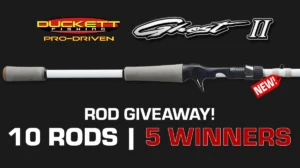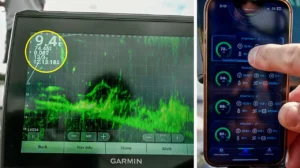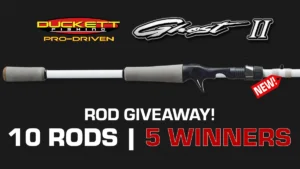Summertime is one of my absolute favorite times to get out on the water and fish. The days are long and the water is hot, which means the fish are offshore. This is my favorite time to go out and throw a big hair jig. You can catch anything in the lake that swims on a hair jig, and its a really fun way to catch some quality fish. Ive caught largemouth to walleye and everything in between on a hair jig, and it can lead to some really fun days out on the water.
This technique is especially productive in the south on places such as the Tennessee River, Chattahoochee River, Texas Lakes and numerous other bodies of water. This technique works for any species of bass, and is a great way to catch some really quality limits this time of year. However, when you are targeting different species of bass with a big hair jig, it is important to chose the right one.
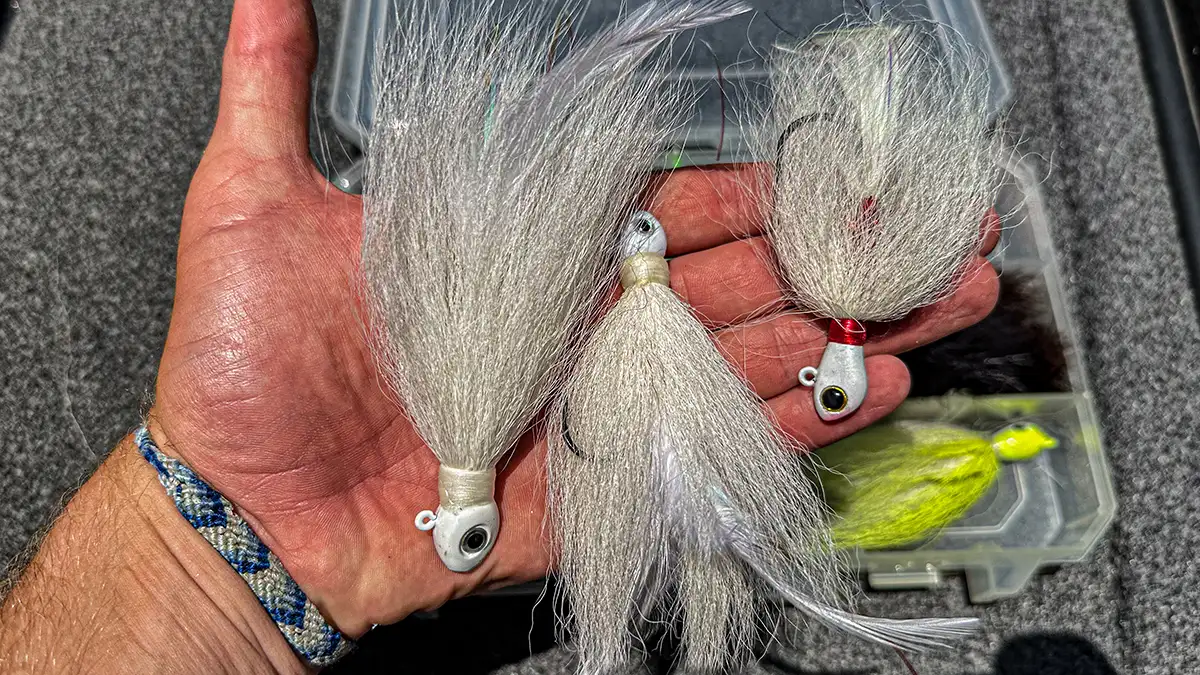
CHOOSING THE RIGHT HAIR JIG
I have caught smallmouth, largemouth and spotted bass on a big hair jig. Throughout my time throwing these jigs, I’ve found that there are a few attributes on these jigs that help with catching specific species of bass.
When throwing a hair jig for largemouth, I really like to up my size. This allows you to catch some of the bigger largemouth in the area and really weeds out some of the smaller bass that aren’t able to eat this bait. I tend to go with either a 5/8 or a 7/8-ounce jig depending on current. If there is a lot of current I will opt for the heavier size in order to keep my bait from washing away. If there is minimal current I will opt for the 5/8-ounce to give my bait a more natural presentation.
I also like a jig with a really bulky profile and a decent sized hook. This bulky profile helps slow down the fall of the bait which gives it a more natural look. It also allows the bait to pulsate as it is fished through the water column. This is a really great way to trigger bites when they aren’t committing to the bait. I like a decent sized hook because you often catch some of the biggest largemouth in the area on this bait. I like the added strength of a bigger hook because it allows you to winch these fish to the boat without fear of the hook bending out. My go to hair jig for this application is a True Bass Shuttlecock in either the 5/8 or 7/8-ounce size depending on current.
For smallmouth and spotted bass I like to downsize my jig size. This is important because these species of bass have much smaller mouths than largemouth. With a bigger sized jig they will often just slap at the bait without ever getting hooked. This is why I like to downsize my jig. I typically go for a 3/8-ounce hair jig when fishing for these species of bass. This allows for a slower more natural fall along with being small enough for these fish to properly eat the bait.
Another important feature when fishing for smallmouth and spotted bass is hook size. I like to downsize my hook when fishing for these types of bass because it greatly increases your hookup ratio. A smaller lighter wire hook allows for easier hook penetration when fishing for these types of bass. Im typically not as worried about my hook bending out when fishing for smallmouth and spotted bass, so I like to downgrade the gauge of my hook because it allows the bait to penetrate the fishes mouth without having to jack them on the hookset.
I still like a bulky sized jig when fishing for smallmouth and spotted bass. This is because it gives the bait a very natural look when moving through the water. The slower fall and pulsating action a bulky hair jig provides is great for getting weary bass to commit to this bait. My go to hair jigs for this application are the the 3/8-ounce True Bass Shuttlecock and the Picasso Lures Special FX Hair Jig in the 3/8-ounce size. These are some of the main features I like to focus on when choosing the right hair jig for a specific scenario. While choosing the right hair jig is important, knowing where to throw it is just as critical.
WHERE TO FISH A HAIR JIG
There is a multitude of different types of cover and structure to throw a hair jig around. Ledges, humps and bush piles are all great areas to fish with this bait. However my absolute favorite thing to target with this bait is a school of bass.
In the summertime, fish tend to move around on offshore structure in schools. You can use side and down imaging to locate these schools of bass on things such as ledges, points and humps. Once you locate a school of bass, my favorite bait to throw is a big hair jig. A hair jig has a really good hookup ratio compared to treble hook baits such as a crankbait. A hair jig also triggers some of the biggest most aggressive fish in the school to bite first. This is super important because a school of bass typically wises up and stops biting after your first couple fish catches. This is why you want to trigger the biggest fish to bite right off the bat.
I like to approach a school of fish from down current and throw up over the school. I will then let the bait sink down to the bottom and hop it all the way back to the boat. Fish tend to bite this bait on the fall or right after you hop it off the bottom. This bait works for schools of largemouth, spotted bass or smallmouth. If I notice I’m getting a lot of bites in an area and not hooking them, I will typically downsize in order to allow them to properly eat the bait.
Another piece of cover where a hair jig excels is a brush pile. This is especially true when fishing for spotted bass. This bait tends to cause some of the biggest bass residing in these piles to commit before any of the smaller fish can come out and eat it. This is one of my favorite baits to throw over offshore brush piles this time of year.
Much like a school, I like to approach the brush pile from down current. I then like to make a long cast over the brush pile and hop the bait along the bottom until I reach the brush pile. Once the bait reaches the brush pile, I like to burn it up over the pile and let it fall down the other side. Fish will often shoot out and attack the jig once it gets directly over the pile or as it falls to the bottom. This is a great way to fish once the school start to break up in the late summer and transition into brush.
IDEAL SETUP FOR A HAIR JIG
When fishing a hair jig, it is important to have the right rod reel and line setup. You often don’t get a ton of bites on a big hair jig, however the ones you do get are typically quality. This is why it is important to have the right setup in order to capitalize on those bites. I typically stick with two setups when fishing a hair jig depending on the size of my jig and what kind of cover I’m fishing around.
When fishing for largemouth around heavy cover, I tend to go for a heavier rod and line size. For line, I like to go with 15 to 17-pound test depending on the amount of cover present. I also like a rod with a lot of length and backbone. This is because you are typically making long casts with this bait. This allows you to get a lot of casting distance while also allowing you to get good leverage over the fish when setting the hook. My go to rod for this setup is a 7-foot,’4-inch heavy Shimano Expride B.
When fishing a smaller sized hair jig, I like to downsize my setup. I like a longer medium-heavy power rod with lighter line. This lighter line gives the bait a far more natural look and it really compliments the lighter sized hair jig. I typically stick with 12-pound fluorocarbon when fishing on this setup. I like a medium heavy rod that loads up on the fish when setting the hook and keeps me from ripping the hook out of the fishes mouth. My go to rod for this application is a 7-foot,’2-inch medium-heavy power Shimano Expride B.
For a reel, I like one with a faster gear ratio and a bigger sized spool. I prefer this on any sized hair jig because it allows you to hold a lot of line and make long casts over fish. This is important because fish will often follow this bait for a while before they eat it, so you want the ability to make longer casts. I also like a higher gear ratio reel because it allows you to catch up with the fish after they bite. Fish often bite this bait when there’s slack in your line, so you want a faster gear ratio reel in order to catch up with the fish and deliver an adequate hookset. My go to reel for a hair jig is a Shimano Curado MGL 150 in the 8:1 gear ratio.
Fishing a big hair jig is a great way to catch some quality bass this summer in both schools and brush piles. These tips are some great things to keep in mind when trying to locate and catch bass on a hair jig this time of year.


